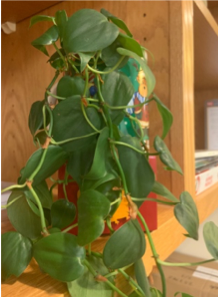Houseplants That Are Safe or Not
go.ncsu.edu/readext?755326
en Español / em Português
El inglés es el idioma de control de esta página. En la medida en que haya algún conflicto entre la traducción al inglés y la traducción, el inglés prevalece.
Al hacer clic en el enlace de traducción se activa un servicio de traducción gratuito para convertir la página al español. Al igual que con cualquier traducción por Internet, la conversión no es sensible al contexto y puede que no traduzca el texto en su significado original. NC State Extension no garantiza la exactitud del texto traducido. Por favor, tenga en cuenta que algunas aplicaciones y/o servicios pueden no funcionar como se espera cuando se traducen.
Português
Inglês é o idioma de controle desta página. Na medida que haja algum conflito entre o texto original em Inglês e a tradução, o Inglês prevalece.
Ao clicar no link de tradução, um serviço gratuito de tradução será ativado para converter a página para o Português. Como em qualquer tradução pela internet, a conversão não é sensivel ao contexto e pode não ocorrer a tradução para o significado orginal. O serviço de Extensão da Carolina do Norte (NC State Extension) não garante a exatidão do texto traduzido. Por favor, observe que algumas funções ou serviços podem não funcionar como esperado após a tradução.
English
English is the controlling language of this page. To the extent there is any conflict between the English text and the translation, English controls.
Clicking on the translation link activates a free translation service to convert the page to Spanish. As with any Internet translation, the conversion is not context-sensitive and may not translate the text to its original meaning. NC State Extension does not guarantee the accuracy of the translated text. Please note that some applications and/or services may not function as expected when translated.
Collapse ▲Poinsettias are deadly if eaten. Nope. Not real. All houseplants are safe and cute and cuddly. Nope. Not so. But do indoor plants lead to improved overall environmental quality? Yes. Having plants in our homes is an important part of creating a sustainable indoor ecology, as well as healthy minds and bodies. We know that gardening can help treat mental health conditions like anxiety and depression. In fact, research shows that being around plants lowers blood pressure and heart rates in stressful situations. Even if you can’t grow plants outside – maybe you have no garden space or limited mobility, plants inside the home can have similar effects – and some interesting consequences to our “biome”.
So what does a biome at home look like? There is a definite connection between the plant microbiome (the genetic material of all the microbes) and the indoor microbiome. Just like humans, plants have recently been recognized as meta-organisms, possessing a distinct microbiome and revealing close symbiotic relationships with their associated microorganism. It’s kind of a package deal.
The indoor microbiomes – the gene scene of the microbe package – of where we live, work and play inside are influenced by exchanges of air, contacts with soil tracked inside, food, flowers, houseplants as well as contacts with pets and people. We bring bacterial groups into the built, enclosed environment all the time. These groups can get influenced and shaped by our activities, our possessions, and our own associated microbes. Sometimes, the result of these influences result in the loss of some very important and helpful biodiversity characteristics.
The phenomenon called the “sick building syndrome” or SBS can cause real problems. SBS describes a situation in which the occupants of a building experience acute health- or comfort-related effects that seem to be linked directly to the time spent in the building. No specific illness or cause can be identified. One world health organization recently estimated that approximately 30% of all new or remodeled buildings have varying degrees of indoor air pollution. There are some harmful volatile organic compounds (VOC’s) indoors like benzenes, Trichloroethylene (TCE) and formaldehyde that are used in making plastics and resins that we find in many of our home furnishings. A number of studies have been done to determine if houseplants can clear some of these harmful chemicals including a study by NASA in 1989 where the leaves, roots, soil, and associated microorganisms of plants were evaluated as a possible means of reducing these indoor air pollutants. Some turned out to be better than others, but the results suggest that one way to freshen things up is to use potted houseplants inside as a source of microbial biodiversity and possibly beneficial microorganisms.
As we approach cooler weather and want the benefits of greening the indoors, identifying which ones will suit your situation the best is important. If you have pets or small children, you will want to know which houseplants are toxic and avoid them or relocate them out of reach. For example, Philodendron is a very common houseplant but all parts of it contain calcium oxalates. A nibbling pup or kitty may end up with a little mouth burning and nausea, but ingesting it will cause severe abdominal pain. Repeated skin contact can result in serious allergic reactions as well. Remember that plants may contain a variety of poisons, causing symptoms ranging from a mild stomach ache to serious heart and kidney problems.
houseplant but all parts of it contain calcium oxalates. A nibbling pup or kitty may end up with a little mouth burning and nausea, but ingesting it will cause severe abdominal pain. Repeated skin contact can result in serious allergic reactions as well. Remember that plants may contain a variety of poisons, causing symptoms ranging from a mild stomach ache to serious heart and kidney problems.
It’s important to get good information that is reliable. Use evidence-based information and double check to make sure you’ve got multiple independent sources that match up on the facts. If you would like more information on houseplants that are safe and those that are toxic, contact your local Extension office.
Minda Daughtry is the Horticulture Agent for North Carolina Cooperative Extension in Lee County.




